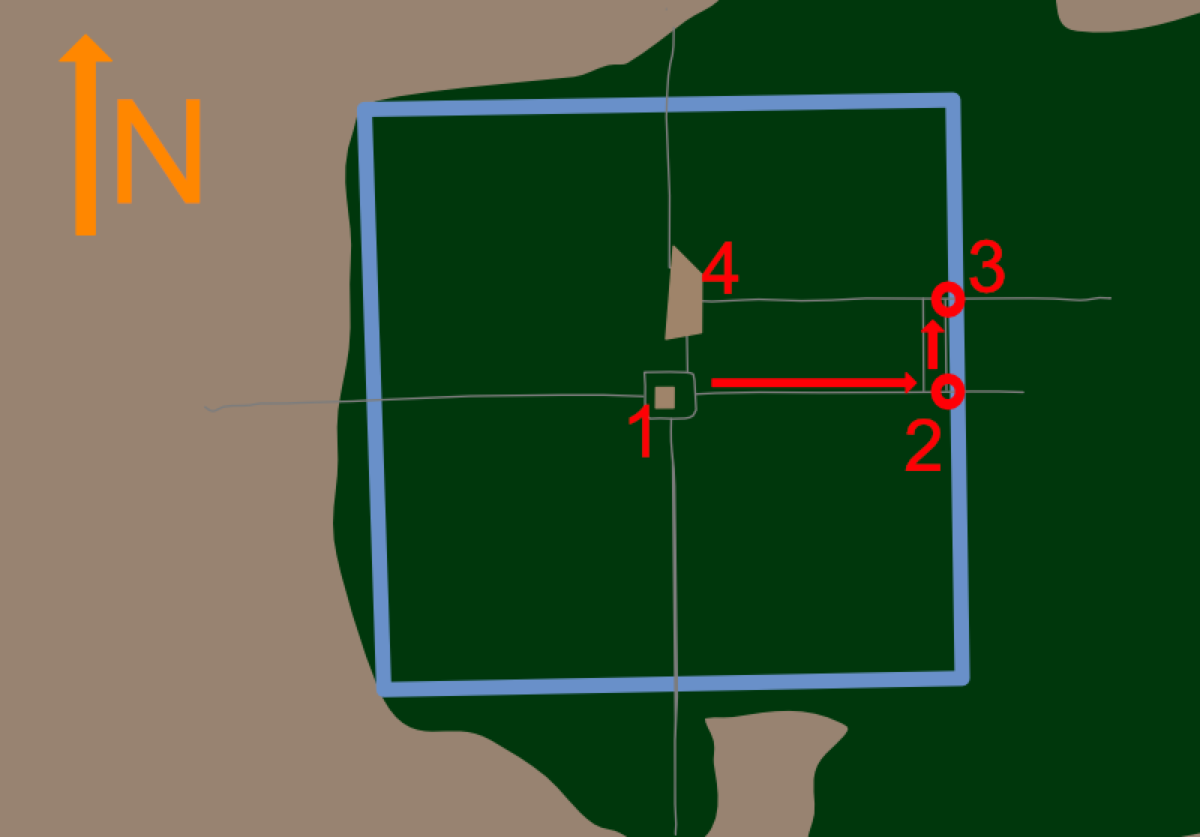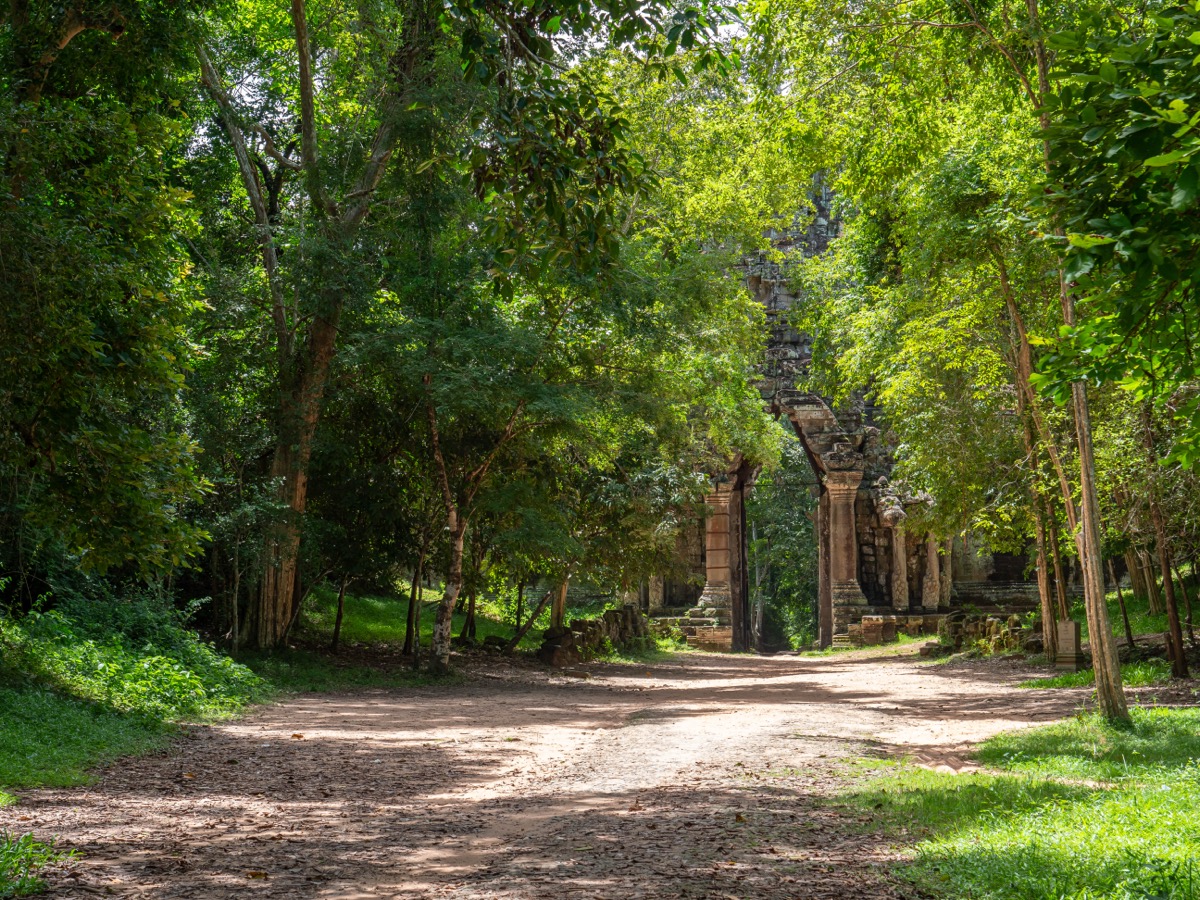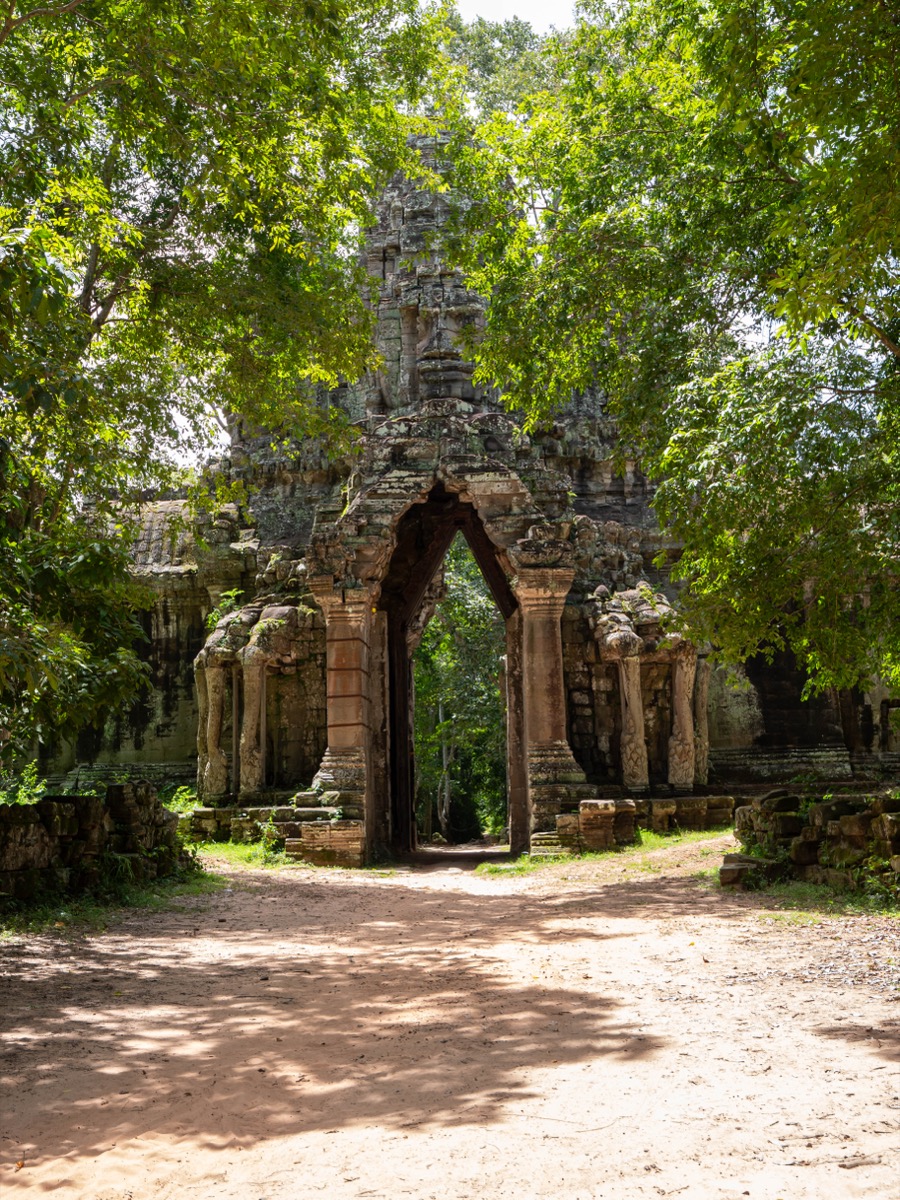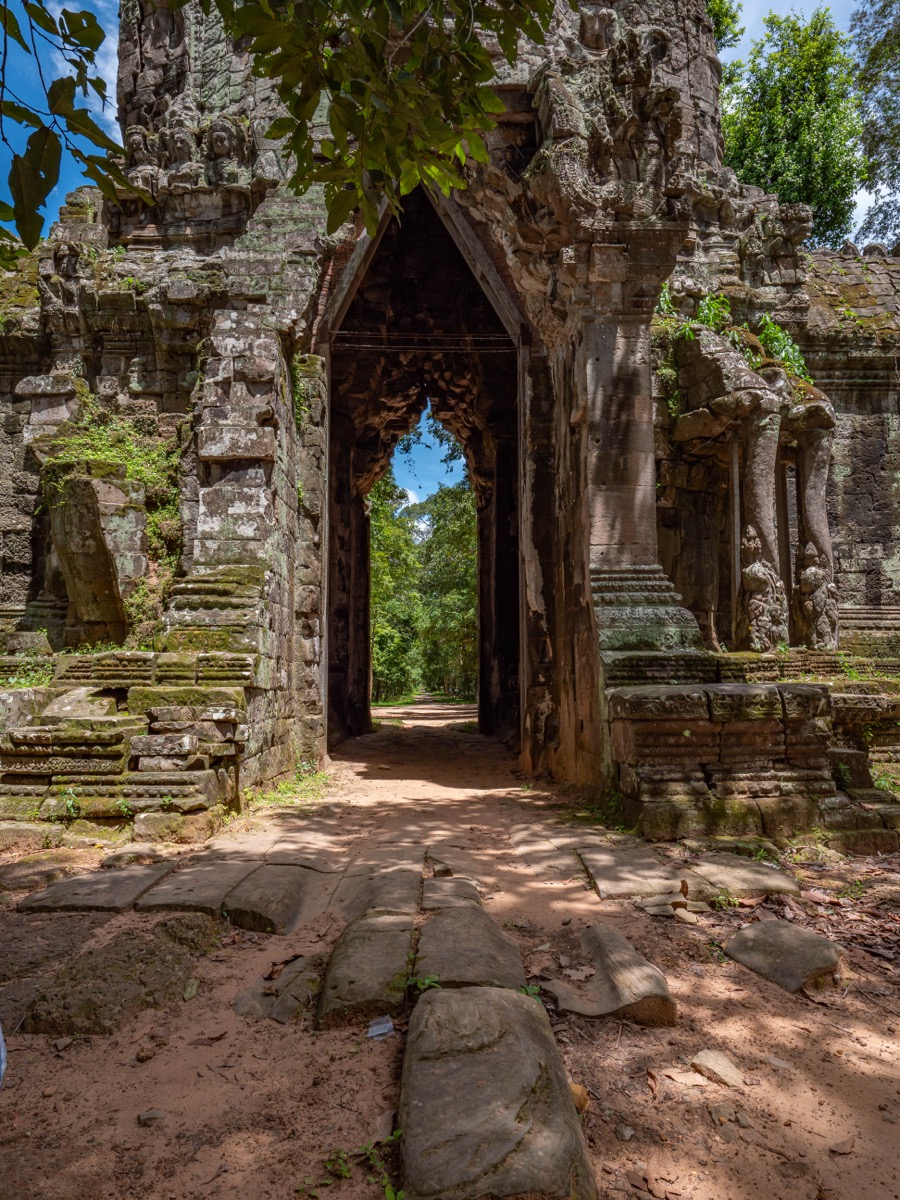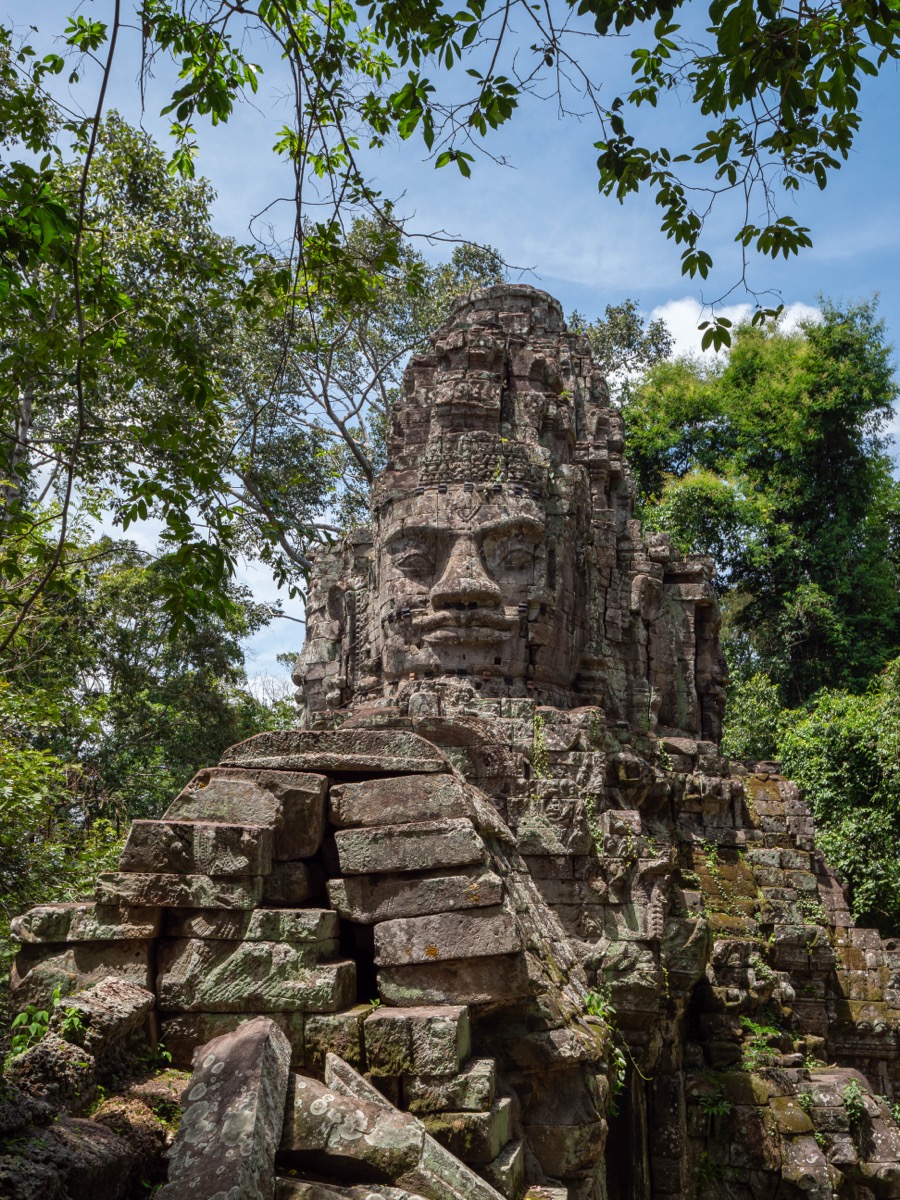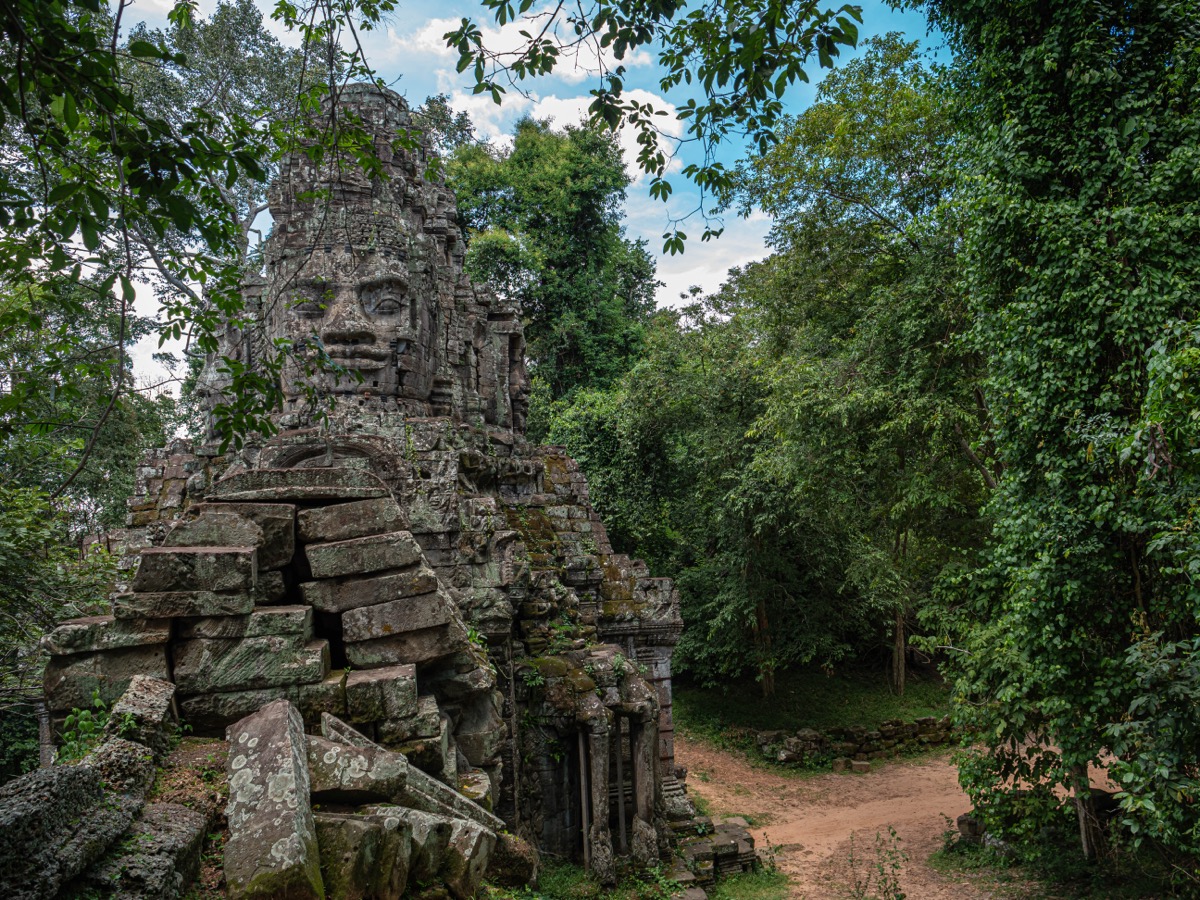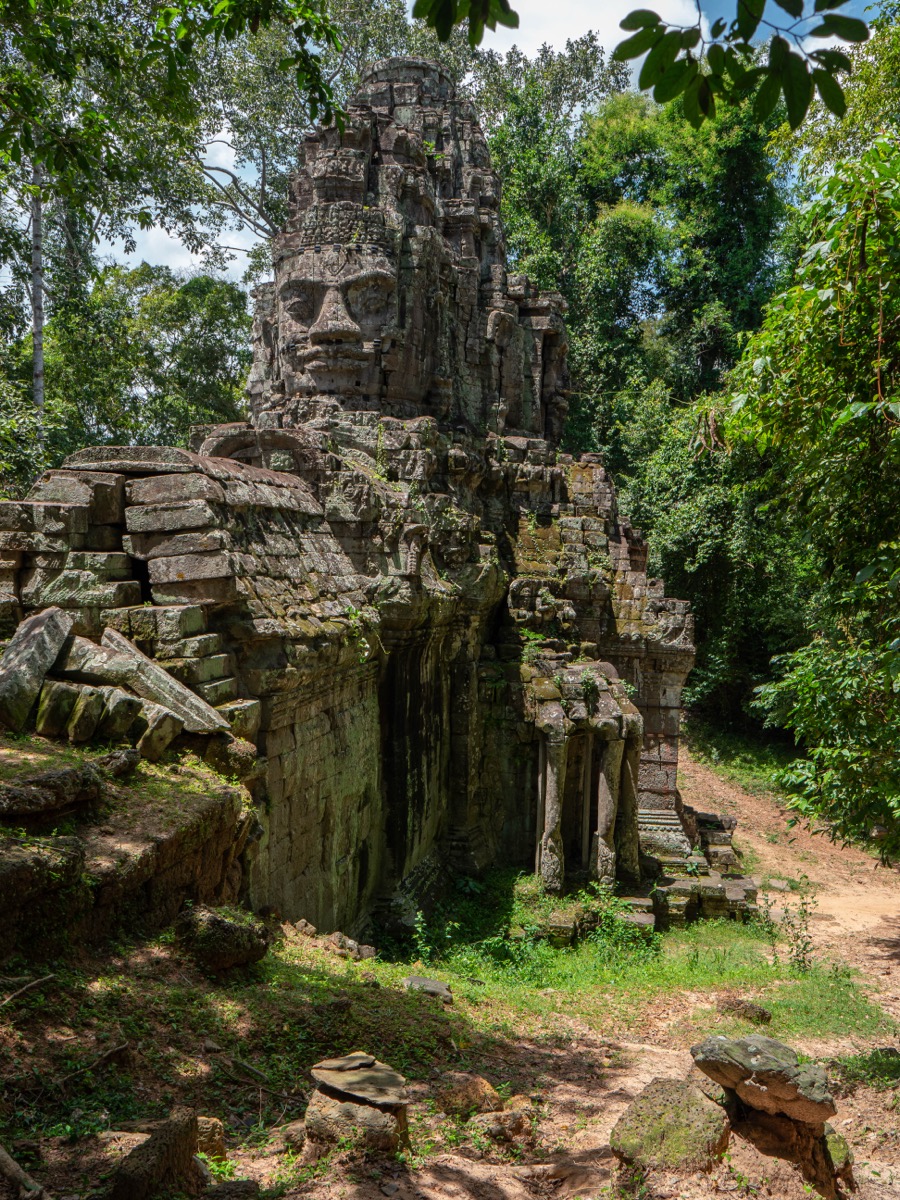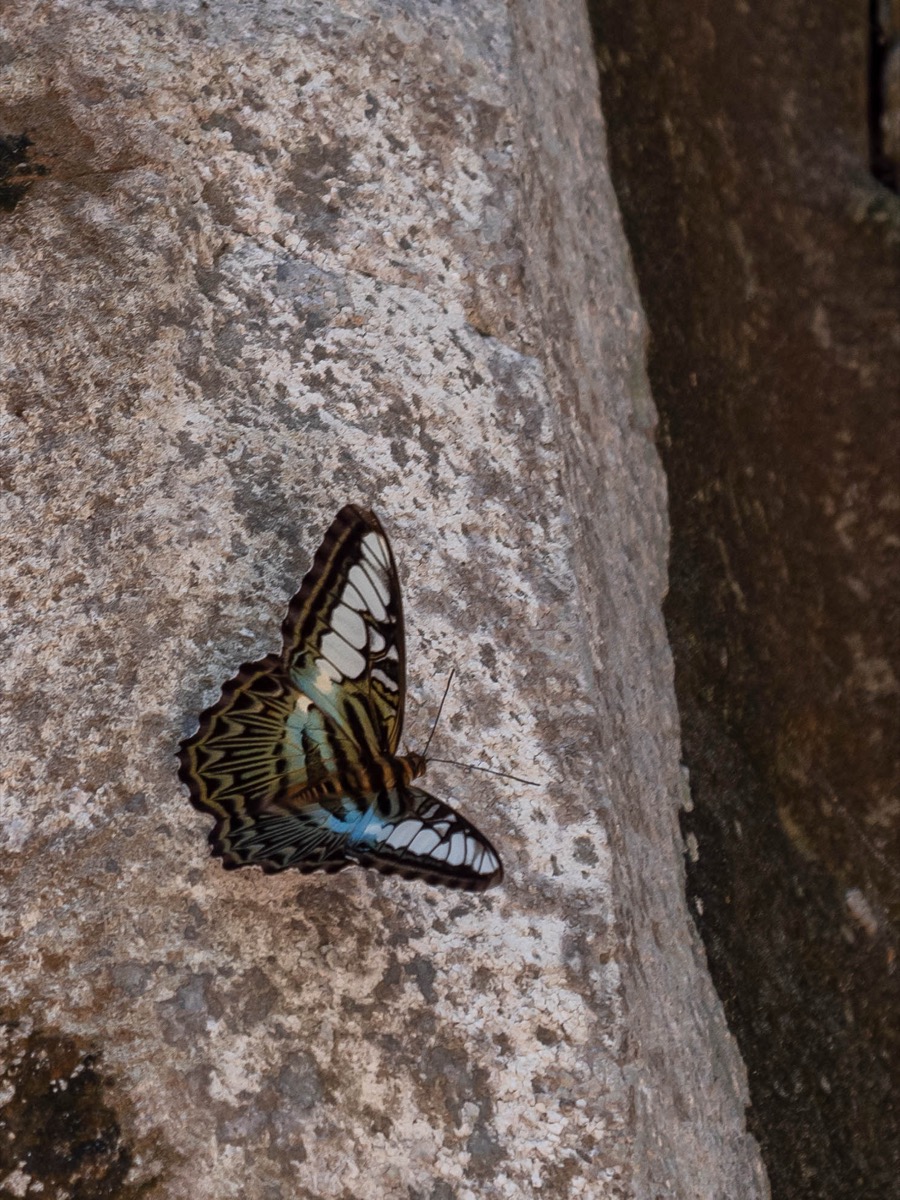The Gate of the Dead
A discreet yet meaningful gateway
Located on the eastern wall of Angkor Thom, between the Victory Gate to the north and the often-confused southern gate, this secondary gate was reserved for funeral rituals. According to tradition, it was the passage through which the bodies of deceased kings or high dignitaries were taken to cremation sites outside the city.
Unlike the other gates adorned with monumental faces or balustrades of gods and demons, the Gate of the Dead is simple, narrow, and almost hidden in the surrounding vegetation.
A symbolic function
The city of Angkor Thom, founded by Jayavarman VII at the end of the 12th century, was designed with cosmological principles. Each gate had its purpose:
- The South Gate, heavily used as the main entrance.
- The Victory Gate, used for royal processions.
- The North Gate, associated with wisdom.
- And the Gate of the Dead, symbolizing the passage to the afterlife.
Its eastern orientation could evoke renewal or, conversely, the departure of the soul from the divine city.
Architecture and decoration
- Stone arch, slightly pointed, framed by laterite walls.
- Reduced size, not allowing for chariot passage.
- No monumental sculptures (Lokeshvara faces or nagas).
- Integrated into the Angkor Thom city wall, now partly collapsed or overgrown with vegetation.
Its austere appearance contrasts with the main gates, reinforcing its singular purpose.
A little-visited gateway
Few visitors venture here, though it is accessible on foot or by bike. It offers a different kind of Angkor experience:
- Silent atmosphere, far from the crowds.
- More intimate feeling, sometimes almost spiritual.
- Presence of massive trees, adding to its mysterious vibe.
It’s a favorite among photographers and travelers seeking hidden gems of Angkor.
Conclusion
The Gate of the Dead of Angkor Thom is a place of transition—not just physical, between the royal city and the forest, but also spiritual, between life and the afterlife. It reminds us that the genius of the Khmer builders lay not only in their monumentality, but also in the symbolic meaning imbued in every architectural element.
The Gate of the Dead is one of the five entrances to Angkor Thom. Located on the east side of the fortified city, it served as an access point to the royal compound. It is also known as the East Gate or Thvear Khnoch/Kmoch Gate.
Like the other gates of Angkor Thom, it is flanked by stone statues representing deities and mythological figures, including Devas and Asuras.
This gate served as the funeral passage for deceased Khmer kings. Upon a ruler’s death, the funeral procession passed through the Gate of the Dead to access a sacred path leading to the temples of the former capital, where cremation ceremonies and funerary rituals were held.
It is rarely visited, likely due to its distance from the main tourist circuits.
